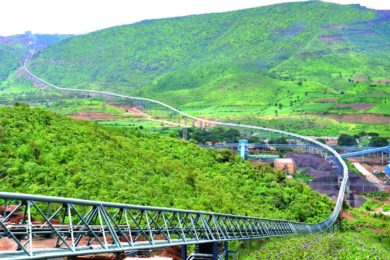2009 will see the political consequences of the global credit crunch start to have an impact on mining and natural resource companies, according to the 16th annual Political Risk Map, launched today by Aon Risk Services. In a global webcast, Aon’s political risk and trade credit experts discussed how the economic instability caused by the credit crunch was having a flow-on effect on political stability.
Miles Johnstone, director of Aon’s Political Risk team, explained: “This year’s map reflects how the impact of the credit crunch is shifting from being an economic problem to a political problem. When an economy is in downturn, the government has less resource available to deal with issues when they arise, potentially leading to political instability.
“We are seeing this particularly in several Eastern European countries, as well as Iceland and Greece, where there is a rise in exchange transfer and sovereign non-payment risk as well as an increase in widespread protests and street disturbances.
The emergence of Very High Risk nations
The past year has seen a number of High Risk countries continue to deteriorate to the point where Aon believes the gap between seven countries – Afghanistan, Congo DRC, Iran, Iraq, North Korea, Somalia and Zimbabwe – and other High Risk countries warranted the creation of a Very High Risk category.
Miles commented: “The level of risk in these countries just continued to get worse. It has reached the point where although we have been able to secure insurance cover for some clients in some of these territories, it is not always available.”
The Commodity Crunch
This year’s map includes a Commodity Crunch Exposure Matrix, which identifies the countries most vulnerable to political instability in 2009 if commodity prices continue to fall, as has been suggested by some forecasters.
“Volatility in global commodity prices in the 1970s and early 1980s contributed to political and economic instability in a number of countries,” according to Roger Schwartz, Senior Vice President of Aon Trade Credit. “Countries that recently benefited from very high commodity prices may suffer as they fall. The types of commodities we are talking about include oils, metals and minerals. Interestingly, the resource nationalism prevalent last year when commodity prices were rising continues, despite the fact prices are now firmly on a downward trend.”
A move to the middle
A reflection of the general rise in the risk level globally, the past year has been notable for a significant shift from the Low Risk category to the Medium-Low category. Six Eastern European countries, Estonia, Hungary, Latvia, Lithuania, Slovakia and Slovenia, as well as Greece and Iceland, received a downgrade.
On the other hand, four High Risk countries, Malawi, Moldova, Syria and Turkmenistan, saw an improvement in their status to Medium-High Risk.
Movements on the 2009 map:
Thirteen countries have been upgraded to a lower risk level: Algeria, Benin, Cameroon, Colombia, Kuwait, Lesotho, Libya, Malawi, Moldova, Morocco, Syria, Tunisia and Turkmenistan.
Eighteen countries have been downgraded to a higher risk level: Afghanistan, Congo DRC, Estonia, Greece, Hungary, Iceland, Iran, Iraq, Latvia, Lithuania, Malaysia, Mauritania, North Korea, Slovakia, Slovenia, Somalia, Thailand and Zimbabwe.
Miles concluded: “It is an uncertain future for many companies and many sectors. Just how some of these issues, such as the commodity crunch, will play out is unclear. We have seen a significant increase in enquiries over the past year from companies seeking political risk cover. It remains to be seen how and to what extent demand for cover is affected by the ongoing impact of the credit crunch on global trade and investment.
“As the global business landscape continues to change, the Political Risk Map provides our clients with the proper analytical tools to assess the various contingencies and determine how they may impact their sustainable growth, continuity and profitability.”








